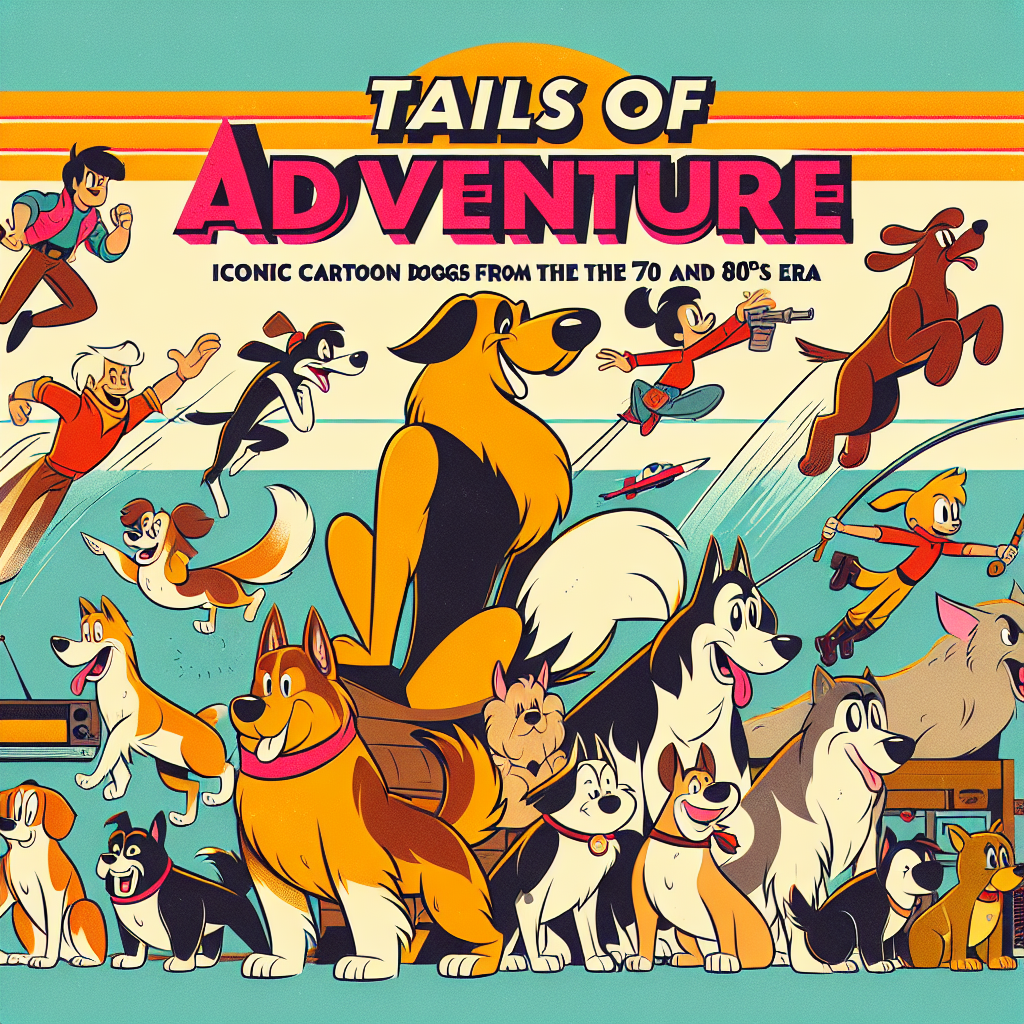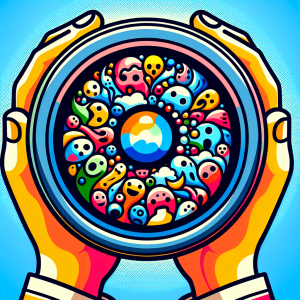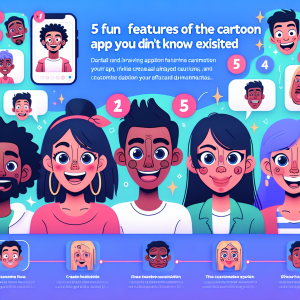Picture this: it’s the late 70s or early 80s, the sun is shining, and as you settle down by the television, a friendly bark echoing from the screen instantly puts a smile on your face. The world of cartoons was filled with imaginative landscapes, heroic quests, and, most importantly, a host of delightful dogs who captured our hearts and imaginations. Join us as we embark on a nostalgic journey to explore some of the most iconic cartoon dogs of this vibrant era. Whether they were leading heroic escapades, solving mysteries, or showing us the power of friendship, these canine characters left paw prints on our hearts. Let’s dive in!
The Canine Cast: Who Were They?
The 70s and 80s were a golden age for animated dogs, each with their own unique traits and tales. Let’s take a closer look at some of the most beloved cartoon canines from this enchanting era.
1. Scooby-Doo – The Mystery Mutt
No list of iconic cartoon dogs would be complete without Scooby-Doo. This Great Dane not only served as the mascot for Mystery Inc. but also brought charms that transcended generations. Debuting in 1969, he became a staple of Saturday morning cartoons throughout the 70s and 80s. Scooby and his gang of teens—Fred, Daphne, Velma, Shaggy, and of course, his snack-loving companion—have spent decades unraveling mysteries and exposing villains who were often far more frightened than the beloved canine himself!
2. Astro – The Jet-Setting Canine
From the futuristic world of “The Jetsons,” Astro was more than just a pet; he was a partner in crime and a loving member of the family. With his signature “Ruh-roh!” catchphrase, Astro’s charming personality brought humor and warmth to the household. This space-age pup, with a penchant for getting into trouble, elegantly captured the spirit of 60s and 70s family dynamics—however his popularity carried well into the 80s.
3. Snoopy – The Creative Canine
Snoopy might just be the poster pup of the 70s and 80s cartoon era. Introduced in Charles M. Schulz’s comic strip “Peanuts” in 1950, Snoopy became an animated sensation. Known for his rich inner life, anti-hero antics, and imaginative adventures as the “World War I Flying Ace,” he turned the mundane world of Charlie Brown and friends into a whimsical escapade. Who could forget Snoopy’s signature dance moves, his loyalty to Woodstock, and his wild dreams of becoming a writer?
4. Brian Griffin – The Sophisticated Canine
Though he officially burst onto the scene in the late 90s with “Family Guy,” Brian Griffin undeniably states a connection to the dog animation styles we’ve seen in earlier decades. An anthropomorphic Labrador with a sharp wit and a penchant for holding a martini, he embodies the complexities of adulthood while providing humorous commentary on a world that often doesn’t make sense. While not from the earlier focus period, Brian was certainly shaped by it.
5. Road Runner – The Speedy Cartoon Duck’s Dog
This may come as a surprise, but did you know that Wile E. Coyote’s constant companion was somewhat canid-like? The Road Runner, while primarily known as a bird, works often in tandem with a much-missed greyhound-like character during many slapstick routines. Wile E. Coyote’s relentless attempts to catch the swift runner fits into the dog and adventure theme, as there were often playful canines involved even if the main character wasn’t one.
6. Huckleberry Hound – The Southern Gentlemen
With his bluesy voice and easygoing nature, Huckleberry Hound brought the charm of the South to the animated universe. One of the stars of the Hanna-Barbera lineup, Huckleberry was often seen navigating various misadventures, always maintaining his cool demeanor. His songs and adventures in the 60s and beyond helped lay the groundwork for a plethora of cartoon dogs that followed.
7. Blue – The Clever Canine
Blue from “Blue’s Clues” came later, but he deserves a mention as a testament to how cartoon dogs evolved over the years. This little blue puppy encouraged kids to think critically, solving problems alongside host Steve and later, Joe. Known for his adorable antics, Blue represented a shift toward interactive learning in children’s programming and set the stage for future canine companions.
8. The 70s and 80s Cartoon Dog Culture
The explosion of cartoon dogs during the 70s and 80s paved the way for a unique culture. Not only were they integral to the plots, but they also taught valuable lessons about loyalty, bravery, and friendship. These shows often paired the dogs with relatable human companions, sparking much laughter and life lessons for viewers. From Saturday morning cartoons to prime-time spots, dogs became symbols of comfort and companionship.
Why Did We Love Them?
As we reminisce about the cartoon dogs of the 70s and 80s, it’s easy to understand why they captured hearts. The mixture of their playful antics, comedic timing, and wisdom made them ideals of companionship and adventure. These dogs often served as mirrors for our own experiences, reflecting our dreams, fears, and the joy of discovery. Their stories resonated with both children and adults, creating a timeless appeal.
The Legacy of Cartoon Dogs
The impact of these cartoon canines is still felt today. Characters inspired by or directly descended from that era can be seen in modern cartoons, films, and even comics. This influence extends beyond just character design and can be noted in storytelling styles and humor, which resonate with audiences worldwide. As new generations discover these beloved characters, the legacy of 70s and 80s cartoon dogs continues to thrive.
Conclusion
As we wrap up our walk down memory lane, it’s clear that the cartoon dogs of the 70s and 80s played a pivotal role in shaping not only animated television but also our understanding of friendship, loyalty, and adventure. From the unforgettable Scooby-Doo to the quick-witted Brian Griffin, these characters continue to inspire laughter, joy, and a sense of nostalgia. So, whether you were a kid with a bowl of cereal on a Saturday morning or an adult revisiting these shows today, these dogs will always hold a special place in our hearts. Grab a treat for yourself (and your dog if you have one), and celebrate the wonderful legacy of cartoon dogs!
FAQs
What was the most popular cartoon dog in the 70s and 80s?
Scooby-Doo emerged as the most popular cartoon dog during the 70s and 80s, captivating audiences with his lovable personality and adventurous spirit. His combination of comedy and mystery-solving made him a timeless icon.
How did cartoon dogs influence modern animation?
Cartoon dogs laid the groundwork for character development and storytelling techniques in modern animation. Their quirky personalities and relatability influenced new characters and allowed for more complex narratives in animated series.
Are any of the cartoon dogs from the 70s and 80s still popular today?
Yes! Many original characters like Scooby-Doo and Snoopy continue to be beloved by newer generations. They have seen modern adaptations, merchandise, and various media that keep their legacy alive and thriving.
What themes did 70s and 80s cartoon dogs often explore?
Common themes included friendship, loyalty, bravery, and the importance of teamwork. These dogs often found themselves in humorous or adventurous situations that highlighted these qualities.
Which cartoon dog made a significant impact on children’s programming?
Blue from “Blue’s Clues” made a significant impact by introducing interactive learning to children’s programming, encouraging critical thinking and problem-solving skills while maintaining the charm and wit characteristic of cartoon dogs.








+ There are no comments
Add yours